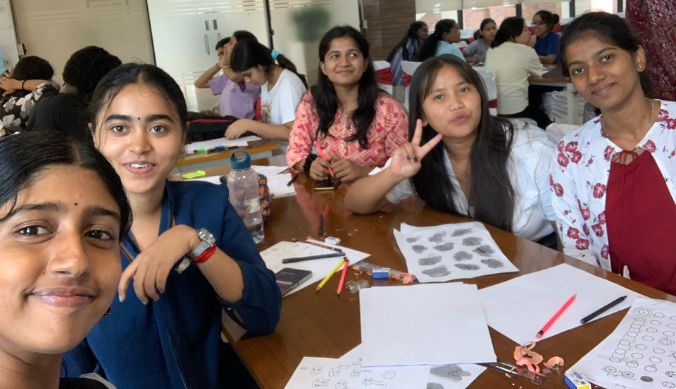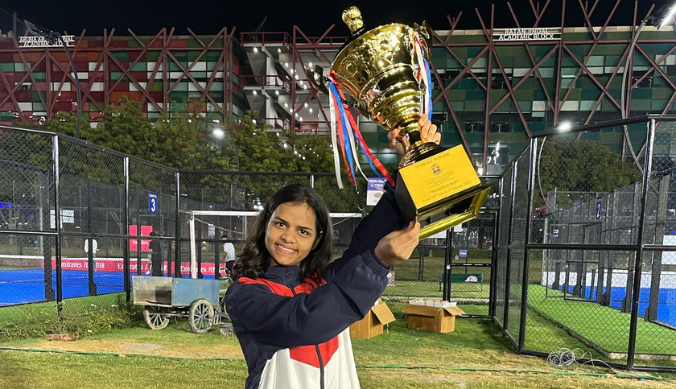RayLab@Ashoka: In Search of Brain Mechanisms Underlying Behaviour
Explore how the lab, under the guidance of Dr. Supriya Ray, uses cutting-edge technologies like eye-tracking, EEG, and pupillometry to investigate brain mechanisms underlying cognitive and visuomotor abilities.
Our brains are constantly inundated with vast amounts of information that we process moment by moment to explore the world effortlessly while handling complex tasks in hand, such as driving a car, without conscious thought. This seamless functioning is made possible because our brains are continuously making millions of decisions and planning the course of our actions—both simple and complex—at every moment. At Ashoka University, under the guidance of Dr. Supriya Ray, we have set up a laboratory to explore the brain mechanisms that underlie cognitive and visuomotor abilities, using cutting-edge technologies, at par with the standard of leading institutes across the globe.
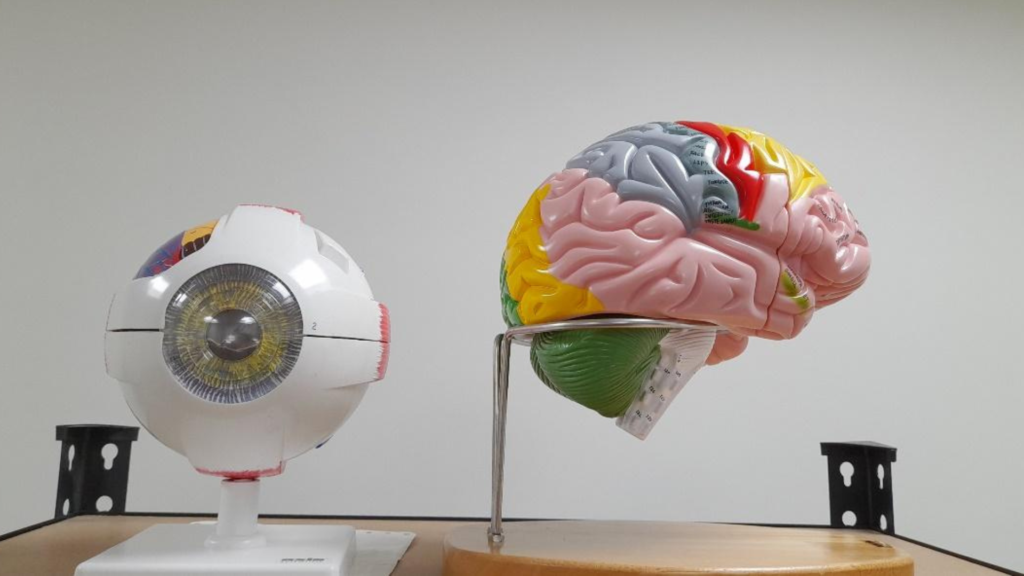
While our eyes primarily exist for vision, their motoric functions are heavily influenced by cognitive processes. Our eyes make rapid, jump-like movements—known as saccades—shifting gaze from one point to another to focus specific objects onto the more sensitive areas of the retina. This process enables us to discern finer details in those objects. Interestingly, the trajectories and speed of these saccades are influenced by the cognitive goals set by the viewer. For instance, an artist painting the ocean may observe the beach differently than children collecting shells in the same scene.
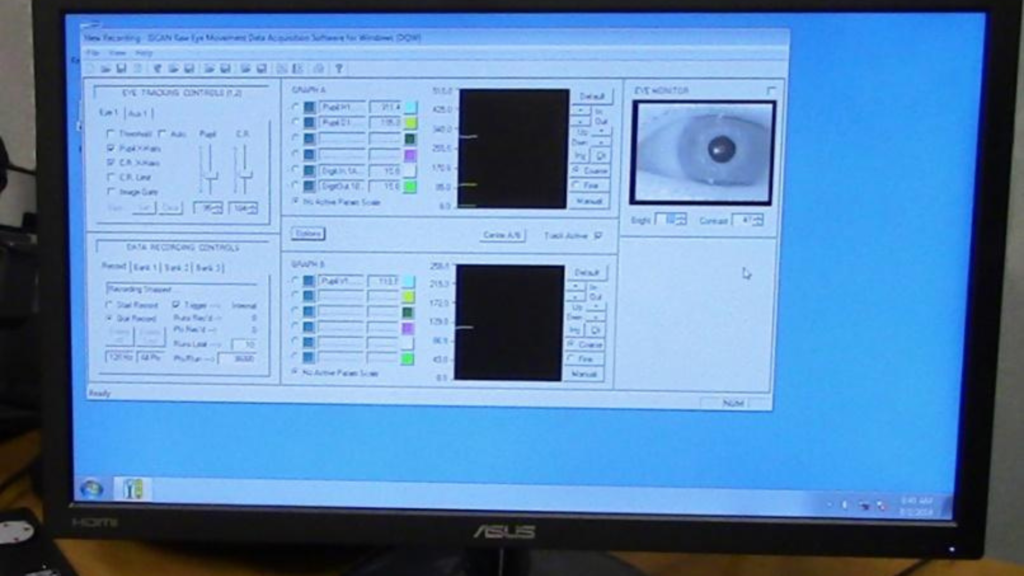
In our lab, we create computer-aided real-time experiments where participants view various visual stimuli and make behavioural choices regarding different visual attributes, such as direction, angle, or colour. Participants indicate their choices through eye movements, which we track in the dark using an advanced remote eye-tracking technology by illuminating the eyes with invisible infrared light. This video-based technology allows us to accurately record gaze positions and the size of the pupils of the eyes. Our experiments are designed to capture specific cognitive processes, including attention, action planning and control, and decision-making. By carefully analysing the trajectory and speed of eye movements, we can gain insights into how the cognitive processes manipulated during the experiment influence the choices participants make.
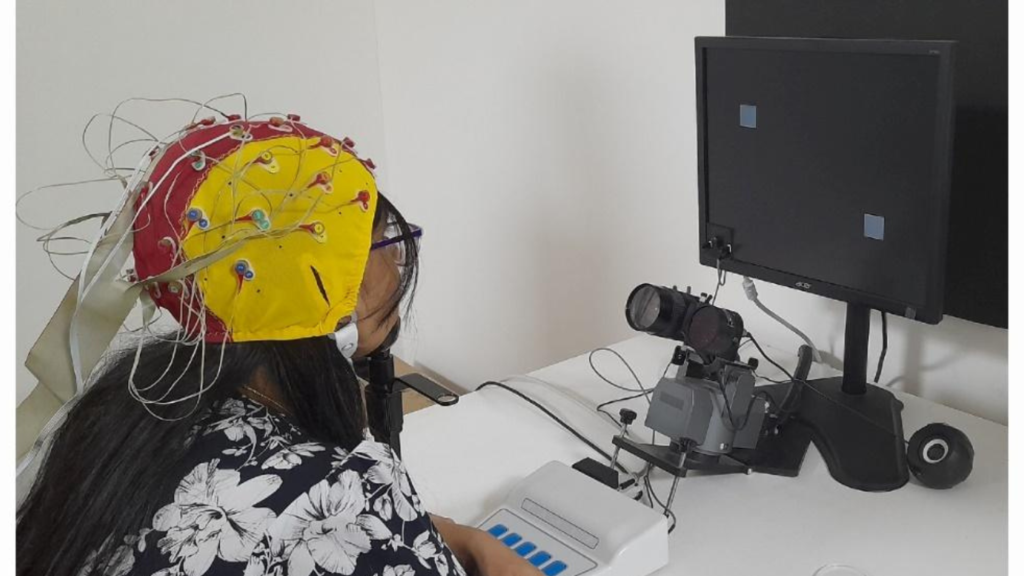
Thanks to extensive research into the neural control of eye movements, scientists have identified the brain regions, pathways, and mechanisms that generate these movements. This understanding allows us to use eye movement patterns observed during experiments to uncover the nature of the cognitive processes under study, as well as the brain mechanisms that govern them. In addition to eye-tracking, we utilise Electroencephalography (EEG) technology in our lab, which measures electrical activity in the brain by placing electrodes on the participant’s scalp. By correlating this activity with specific moments or events in the experiments, we can draw conclusions about brain activity in response to certain cognitive and visuomotor processes triggered by our experimental manipulations.
Another intriguing advancement in this field is Pupillometry. The pupils, which regulate light intake, automatically respond to lighting changes by dilating in darkness and constricting in light—a phenomenon known as the pupillary light response (PLR). Beyond these reflexive reactions, pupil size is also affected by cognitive processes such as emotional arousal, imagination, and attention. For example, it has been shown that solving complex math problems leads to pupil dilation, indicating an increased mental load compared to solving simpler problems. Eye trackers provide a continuous measurement of pupil size, reflecting underlying neurophysiological activity, as the brain regions responsible for reflexive pupil control are influenced by higher-order cognitive regions linked to executive functions and decision-making. In our lab, we also measured pupil size using a handheld device called a pupillometer before participants undertook our experiments. The pupillometer emits a brief flash of light into the participant’s eyes, allowing for precise recording of the pupil’s contraction response. Throughout the cognitive experiments, we continue to monitor pupil size with the eye tracker, comparing the changes induced by experimental manipulations to the PLR data collected via the pupillometer.
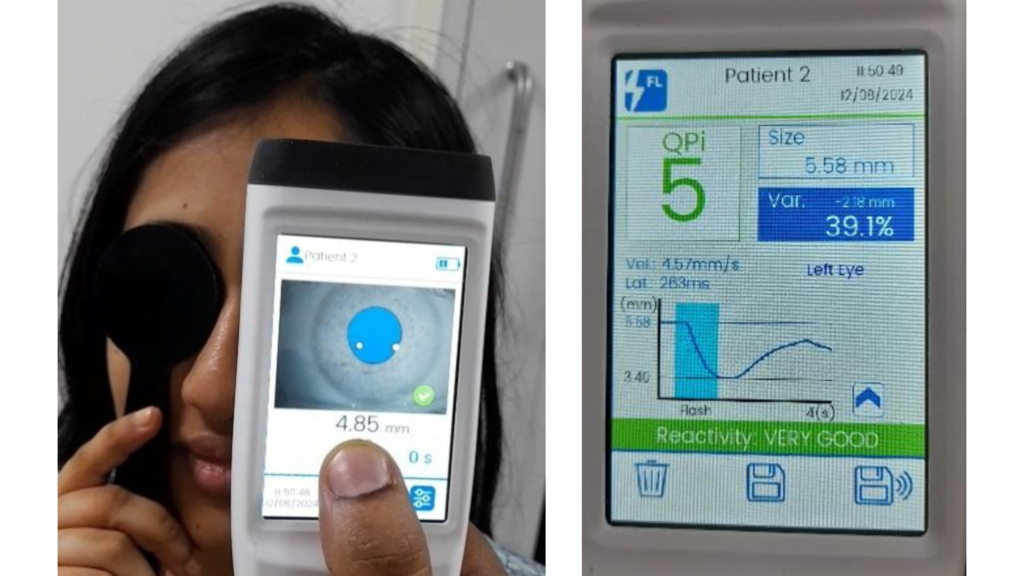
By combining simple psychophysical experiments with eye-tracking, EEG, and pupillometry, we move closer to understanding the brain circuitry behind cognition. Moreover, computational modelling of our behavioural and neurophysiological data can illuminate the mechanisms responsible for the behaviours observed in our studies. We also plan to evaluate whether these computational models accurately predict cognitive and visuomotor capabilities in clinical groups with conditions such as Dementia, Parkinson’s disease, Tourette syndrome and Attention-Deficit-Hyperactivity-Disorder (ADHD) in the future. Insights gained from comparing brain mechanisms in healthy and clinical populations can aid in finding biomarkers for these conditions and potentially facilitate early detection and prevention strategies.
[Written by: Sayali Pethe (Ph.D. Student, Dept. of Psychology]
Study at Ashoka











